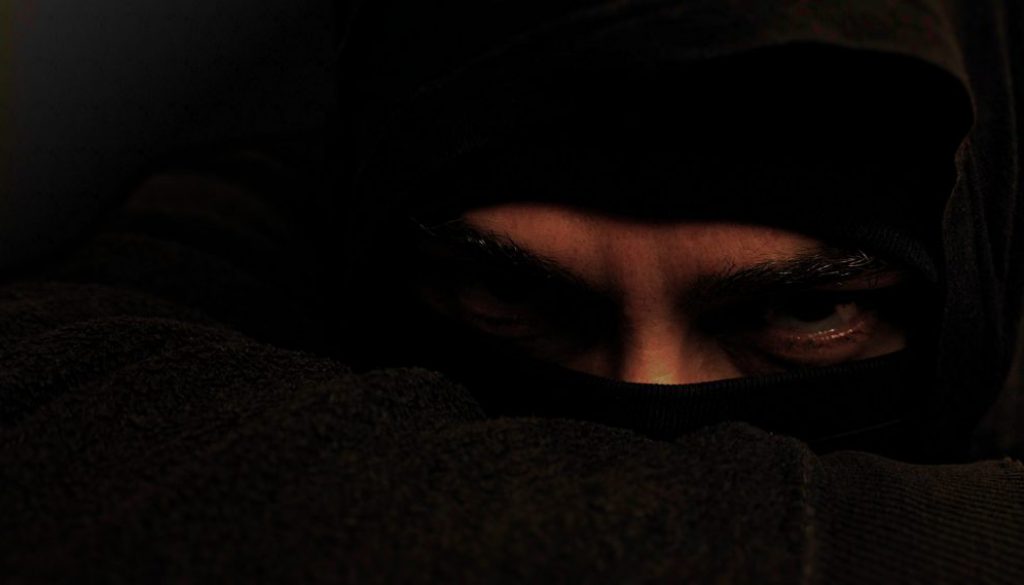Ninja (shinobi): who they were and how they acted
What do common people think when they hear the word “ninja”? Probably the first image that comes to mind is that of men:
- Dressed in black (read Invisibility: the best night stealth color)
- With mask and hood
- Who throw deadly shuriken
- Who continuously make acrobatic jumps
- Who climb between the roofs
- Who disappear behind clouds of smoke
- …
This modern collective imagination comes from the Japanese Meiji era (starting in 1868) and in particular, over the years, it has been stratified by:
- Heroic tales
- Movies (eg. Ninja Assassin, read 5 teachings from the movie Ninja Assassin)
- Anime and manga (eg. Naruto)
- …
However, the earliest descriptions of the ninja figure date back to far more distant periods.
The truth about Ninjutsu: the art of stealth
The truth is that the real Japanese feudal ninja (or better, “shinobi”, the abbreviation of “shinobi-no-mono”, 忍者) was a spy / mercenary and his duties included:
- Espionage
- Sabotage
- Infiltration
- Murder
- Guerrilla warfare
- …
He was more:
- A spy or a mercenary (not forcibly a killer, not forcibly an athlete nor an expert in combat)
- A master in deception and stealth (read for example Stealth mobility), more similar to a secret agent than necessarily to a warrior
- Not able to do impossible things like walk on walls like lizards (read also How to climb over a wall), jumping like frogs or other nonsense
- …
The main sources about ninja
The main sources about historiographic ninja are:
- Ninpiden (1560) – This “secret” Ninjutsu manual offers a complete collection of tools and uses (and it seems it was written by Hattori Hanzo)
- Basenshūkai (1676) – This book (that contains laws, tactics, formulas and tools of ninjutsu) offered a clear vision of the mansions of this so mysterious figure
- Shoninki (1681) – Written by a member of Kishu Ryu (a samurai school of martial arts and espionage), it talks about the specifics of their traditions and methods
To them we could add:
- Buke Myōmokushō (1800) – This encyclopedia of samurai families says that the ninjas had learned the use of the first firearms and were used as “snipers” on the battlefield; their first goals were recovering enemy’s information and launching surprise attacks (sometimes resorting to firing guns and murder)
The evolution of the figure of the ninja
At the beginning of the fifteenth century, their deeds became less heroic. Their main tasks included, for example, guarding the gates of Edo Castle (in present-day Tokyo).
In fact, it is assumed that the Hanzōmon gate is called this way because the famous ninja Hanzō Hattori was guarding it.
They also had the task of escorting the feudal lord on his visits to Edo, guarding the castle and saving family records in the event of fires or other disasters, including natural ones.
Subsequently, in the Sengoku period (XV and XVII century), the ninja led the double life of warriors and farmers.
When these two classes were clearly separated by some government reforms of the time, the ninjas were relegated to simple farmers.
It was then thanks to the Basenshūkai that this figure was emphasized, managing to hit the popular imagination.
In-depth articles
- 6 Dragons Kung Fu’s Fabric Cloth training with a Ninjato – A sword that, in the twentieth-century, has been connected to the modern figure of the ninja
- Stealth walking: Technique 1 – How to walks as much silently as possible, or better, how to get unnoticed
Questions
Reply in the comments and share your experience:
- Do you like the figure of the shinobi?
Author: Master Kongling
Founder of 6 Dragons Kung Fu.How to master 6 Dragons Kung Fu?
Are you searching for:
- Daily training exercises?
- Synthetic theory and concepts?
- A step by step path from white to black belt?
- A path (clear, consequential and gradual) designed to build real martial skills?
- A direct contact with Master Kongling?
Go to our Patreon page and choose a training plan: starting from the Practitioner level, you will gain access to all this and much more.
Inside each Premium Lesson, you will receive the same teaching (practices, tips, concepts, small secrets and corrections) reserved to the live students of Master Kongling.
Important - Once a certain number of registrations are reached, no other participants can be accepted. For more information write to: [email protected].









